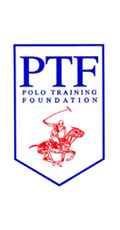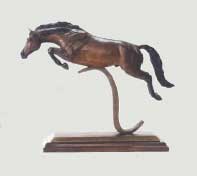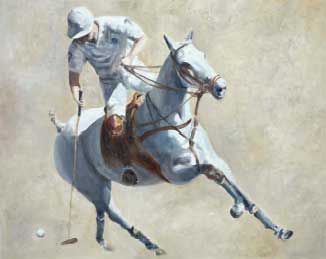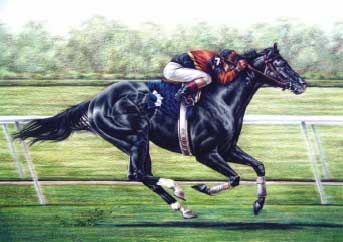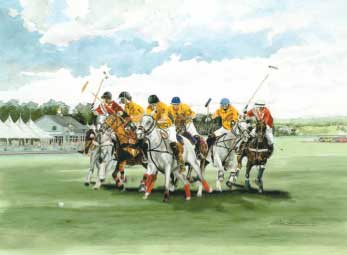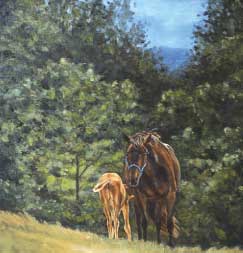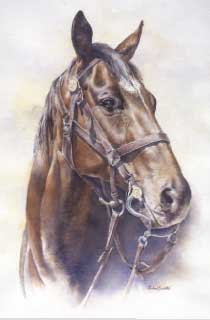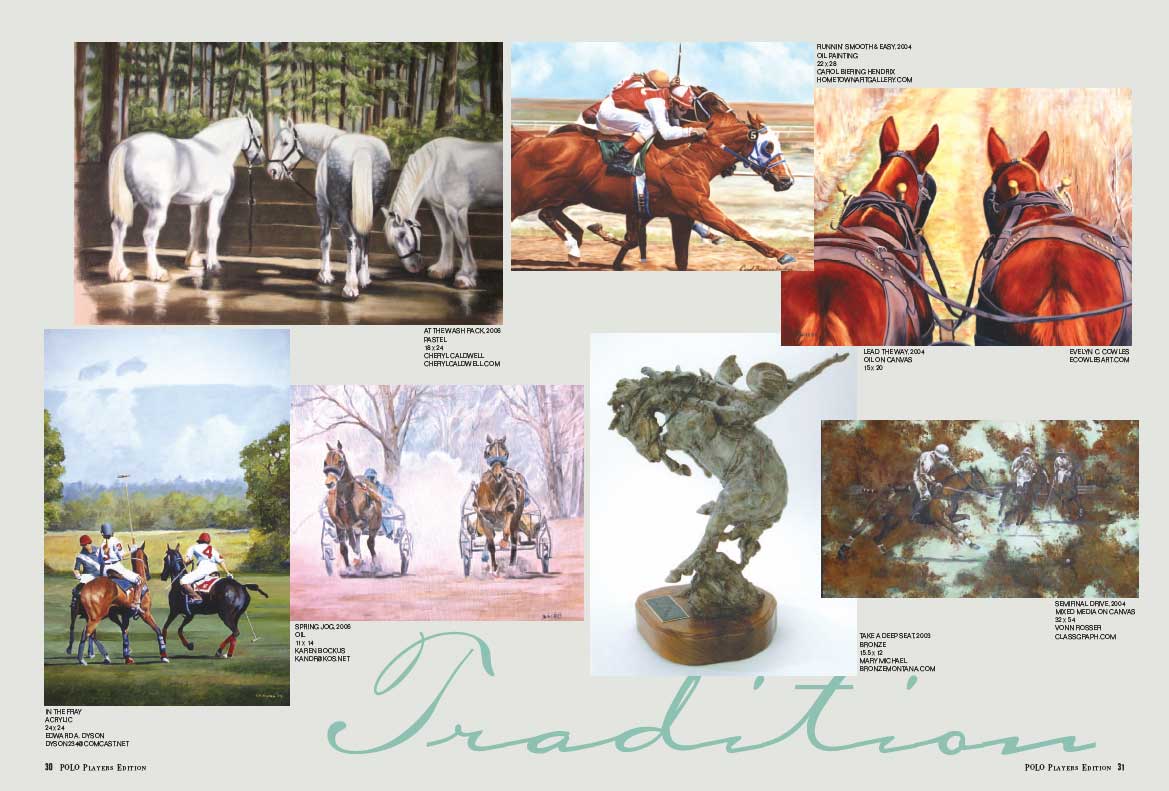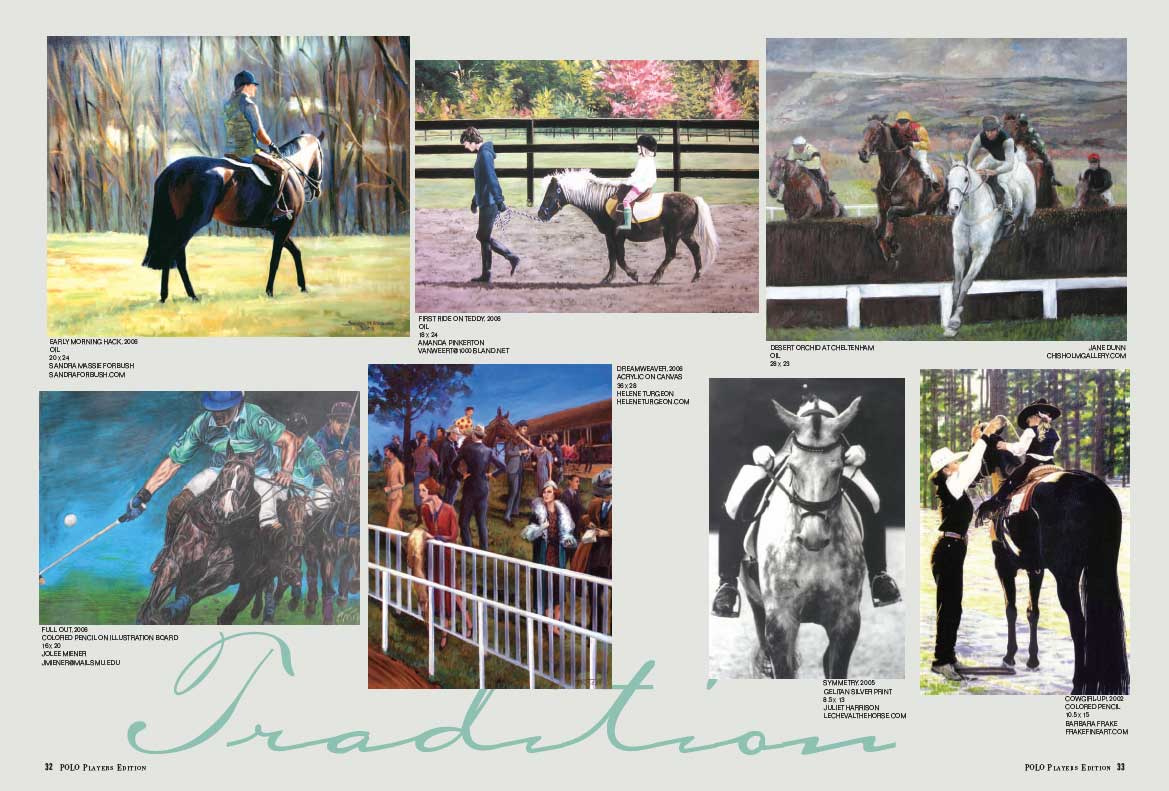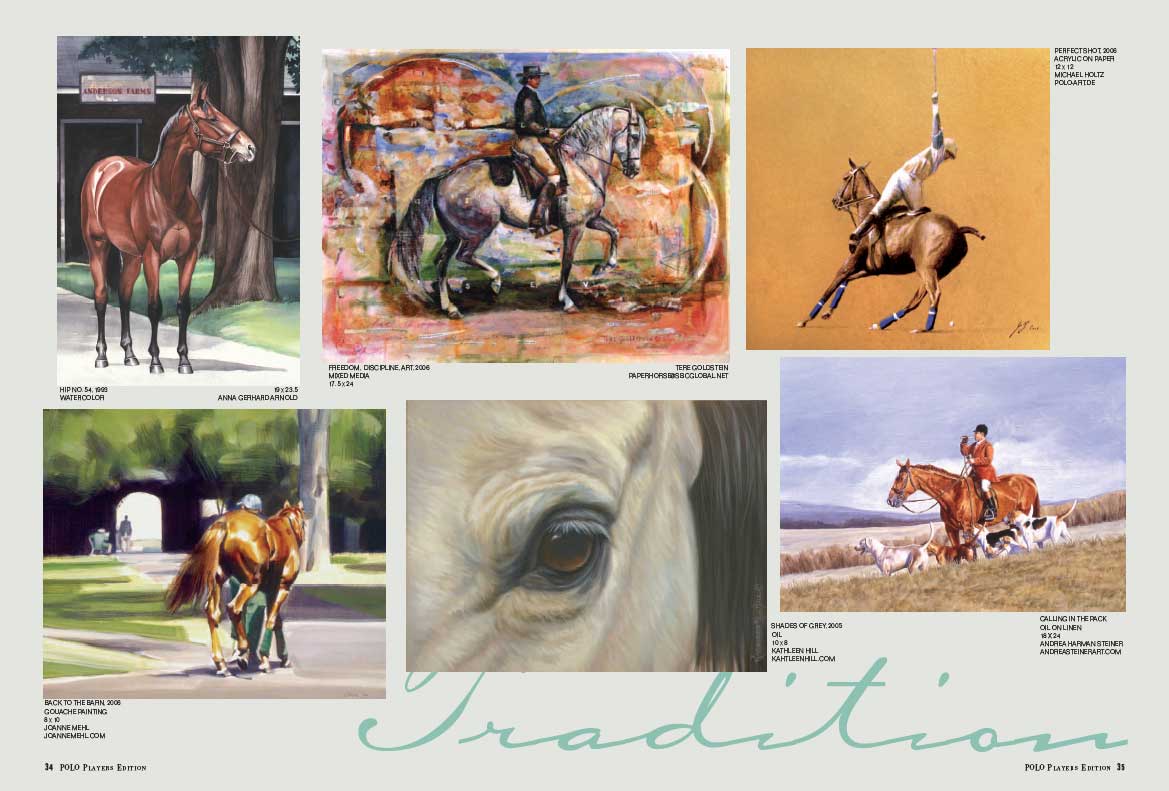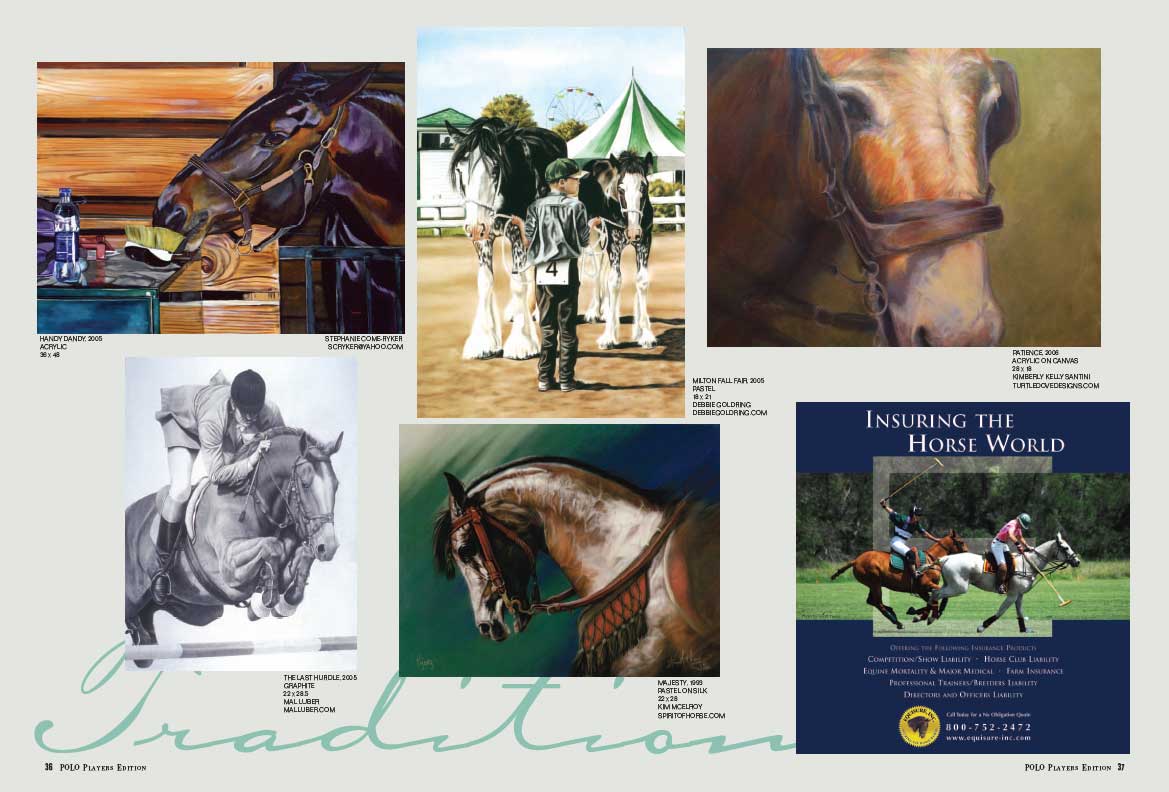Horses and longtime horse sports are captured in a variety of ways.
|
There are few things in the world as traditional as horses and the equestrians who compete with them. Since the domestication of horses, they have been used to transport people and cargo, to plow and cultivate fields and to carry soldiers into war. After, horses were used for sport such as the Roman chariot races and point-topoint races, which later evolved into numerous other equestrian pursuits. For many centuries horses have also been depicted in art, finding form in carvings, drawings and sculpture. One of the more notable horses races in history still occurs each year in Siena, Italy, and is known as the Palio di Siena. The oldest document recording the Palio dates to 1238. The race, run twice a year in July and August, is between neighborhoods, with each entering a horse to represent its people. They race for pride, and the winner is said to bring good luck to the neighborhood. A year is spent preparing the horse and jockey, who ride bareback. Artist Barbara Borck-Hart depicts this race in her painting titled The Fallen Rider, located on our cover. Rita Williams honors the tradition of racing in her portrait of Turf Horse, while Helene Turgeon brings to life a race from earlier times, in her watercolor titled Dream Weaver. Foxhunting originated in England as early as the 1500s, when farmers used it as a way to control the fox population, which were damaging crops and killing farm animals. Foxhunting came to the United States some 100 years later, and even George Washington is said to have enjoyed the sport. Though foxes are rarely killed in today’s foxhunts, this riding tradition continues around the world. A longstanding tradition in foxhunting is the attire: scarlet jackets for hunt staff, black jackets for the rest of the field, breeches, tall black boots and white shirts. Andrea Harman Steiner reveals not only foxhunting but the traditional foxhunting regalia. From foxhunting came steeplechase, brought to life in Jane Dunn’s oil Desert Orchid at Cheltenham. Foxhunting is also said to be the origin of jumping, which was a way to get over obstacles when chasing the fox. Eventually riders would compete over jumps, and those competitions were moved to arenas sometime in the mid-1800s mainly so spectators could watch. Mal Luber shows the athleticism of the jumping horse in his graphite drawing titled The Last Hurdle. Polo hasn’t changed all that much since James Gordon Bennett first introduced it in the United States in the late 1800s. In fact, the game is still quite similar to how it was played around the world hundreds of years ago. Very often, children who grow up in equestrian families go on to be equestrians themselves. This is true in polo, too, where families like the Linfoots, Barrys, Beals and Johnstons, have competed in the sport for generations. Rod Skidmore’s polo painting The Orthweinshighlights one such family. For Western riders, nothing is more traditional or American than rodeo competitions such as cow roping, bull and bronc riding and barrel racing, which evolved from the daily chores of cowhands on ranches more than a hundred years ago. Mary Michael’s sculpture Take A Deep Seat depicts bronc riding, while Barbara Frake’s colored-pencil drawing Cowgirl-Up! and Amanda Pinkerton’s oil First Ride on Teddy shows women passing their love of riding on to the next generation. Barbara Widmann’s watercolor, titled Regal reminds us of the old cavalry horse, while Debbie Goldring’s pastel Milton Fall Fair, takes us back to a summer day some 50 years ago. Even Tucker Bailey’s oil A Quiet Place and Stephanie Come-Ryker’s acrylic Handy Dandy celebrate our relationship with the horse, whether in the back yard or in the stable. For centuries artists have been captivated by horses, recreating them in a variety of media, from bronze sculptures, to oils, to watercolors and pencil drawings. We hope you enjoy our traditional selection of equestrian art depicting a variety of equestrian pursuits created by some of today’s most talented artists.
|
||||||||||||||||||||





